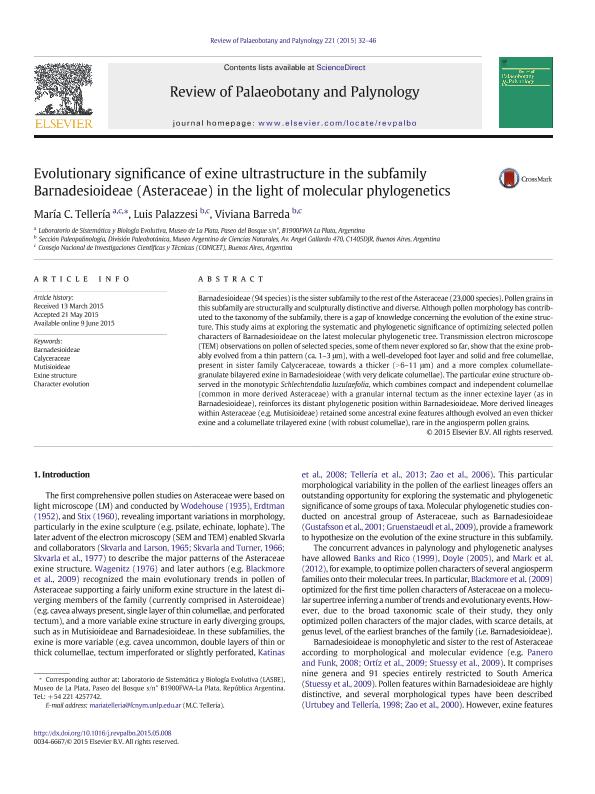Artículo
Evolutionary significance of exine ultrastructure in the subfamily Barnadesioideae (Asteraceae) in the light of molecular phylogenetics
Fecha de publicación:
10/2015
Editorial:
Elsevier Science
Revista:
Review of Palaeobotany and Palynology
ISSN:
0034-6667
Idioma:
Inglés
Tipo de recurso:
Artículo publicado
Clasificación temática:
Resumen
Barnadesioideae (94 species) is the sister subfamily to the rest of the Asteraceae (23,000 species). Pollen grains in this subfamily are structurally and sculpturally distinctive and diverse. Although pollen morphology has contributed to the taxonomy of the subfamily, there is a gap of knowledge concerning the evolution of the exine structure. This study aims at exploring the systematic and phylogenetic significance of optimizing selected pollen characters of Barnadesioideae on the latest molecular phylogenetic tree. Transmission electron microscope (TEM) observations on pollen of selected species, some of them never explored so far, show that the exine probably evolved from a thin pattern (ca. 1–3 μm), with a well-developed foot layer and solid and free columellae, present in sister family Calyceraceae, towards a thicker (> 6–11 μm) and a more complex columellate-granulate bilayered exine in Barnadesioideae (with very delicate columellae). The particular exine structure observed in the monotypic Schlechtendalia luzulaefolia, which combines compact and independent columellae (common in more derived Asteraceae) with a granular internal tectum as the inner ectexine layer (as in Barnadesioideae), reinforces its distant phylogenetic position within Barnadesioideae. More derived lineages within Asteraceae (e.g. Mutisioideae) retained some ancestral exine features although evolved an even thicker exine and a columellate trilayered exine (with robust columellae), rare in the angiosperm pollen grains.
Archivos asociados
Licencia
Identificadores
Colecciones
Articulos(MACNBR)
Articulos de MUSEO ARG.DE CS.NAT "BERNARDINO RIVADAVIA"
Articulos de MUSEO ARG.DE CS.NAT "BERNARDINO RIVADAVIA"
Citación
Tellería, María Cristina; Palazzesi, Luis; Barreda, Viviana Dora; Evolutionary significance of exine ultrastructure in the subfamily Barnadesioideae (Asteraceae) in the light of molecular phylogenetics; Elsevier Science; Review of Palaeobotany and Palynology; 221; 10-2015; 32-46
Compartir
Altmétricas




